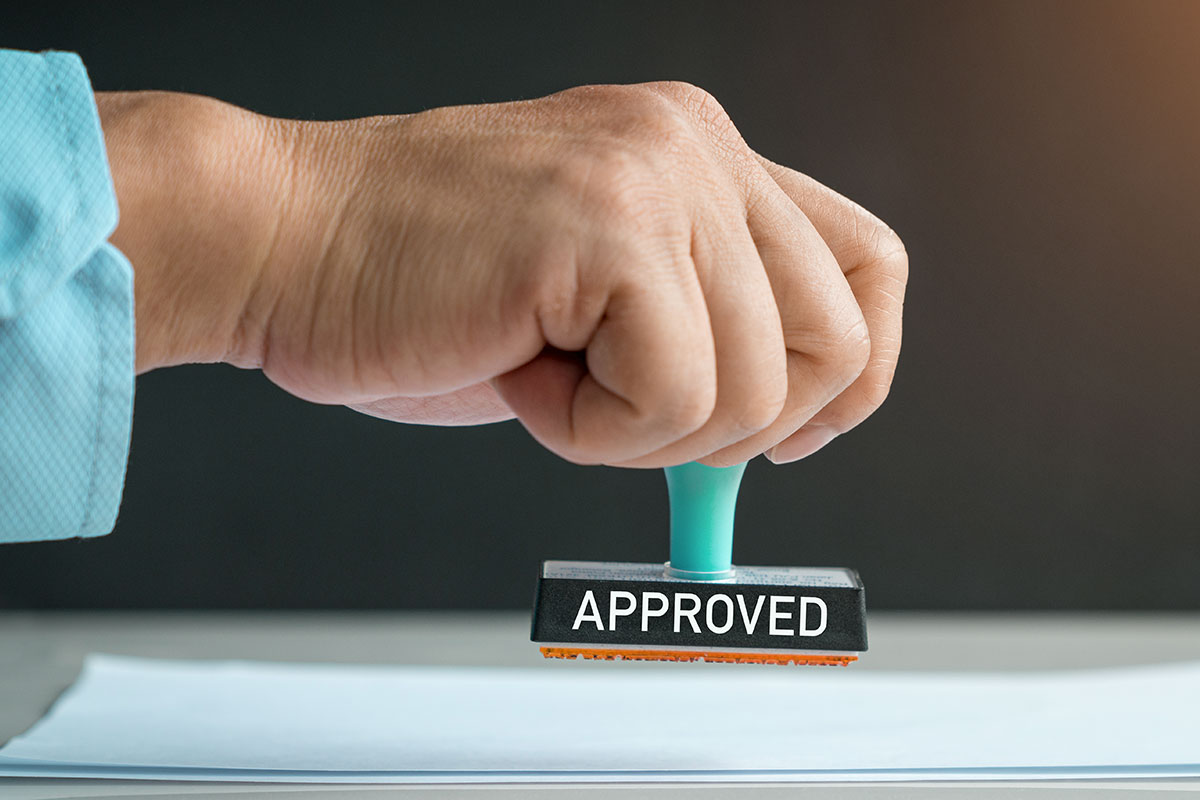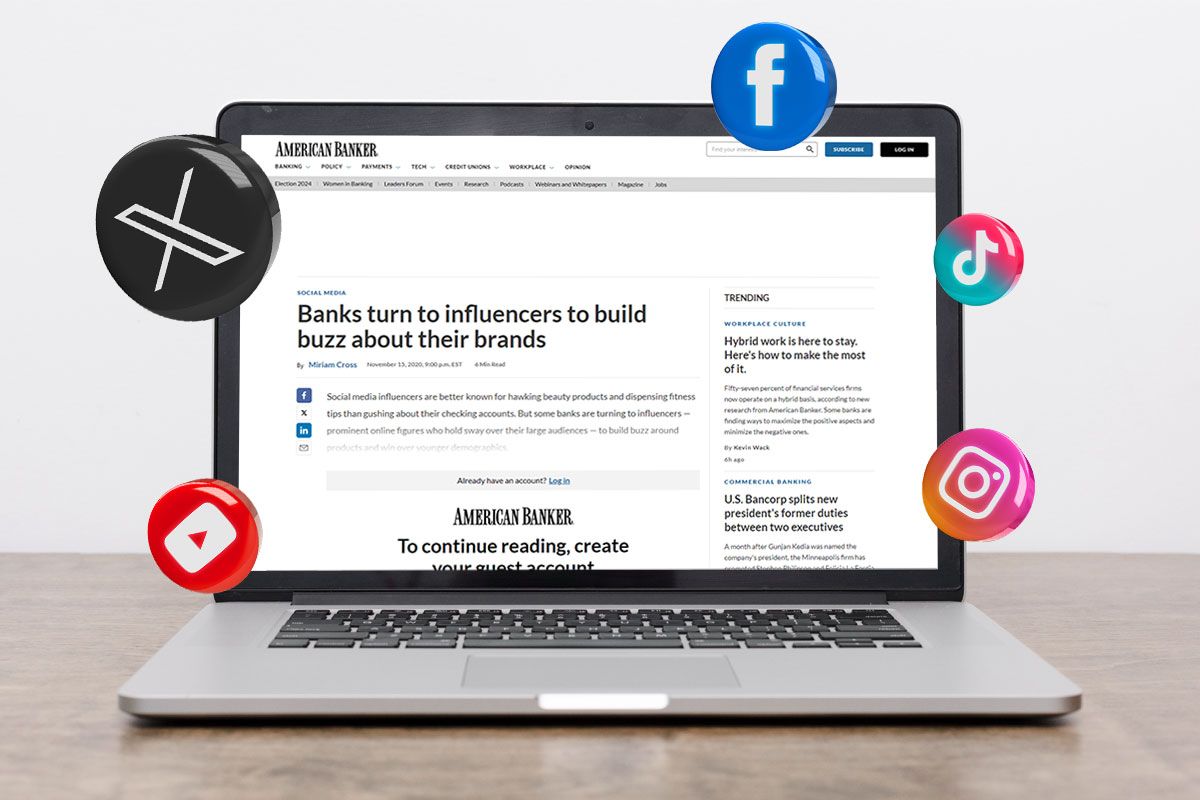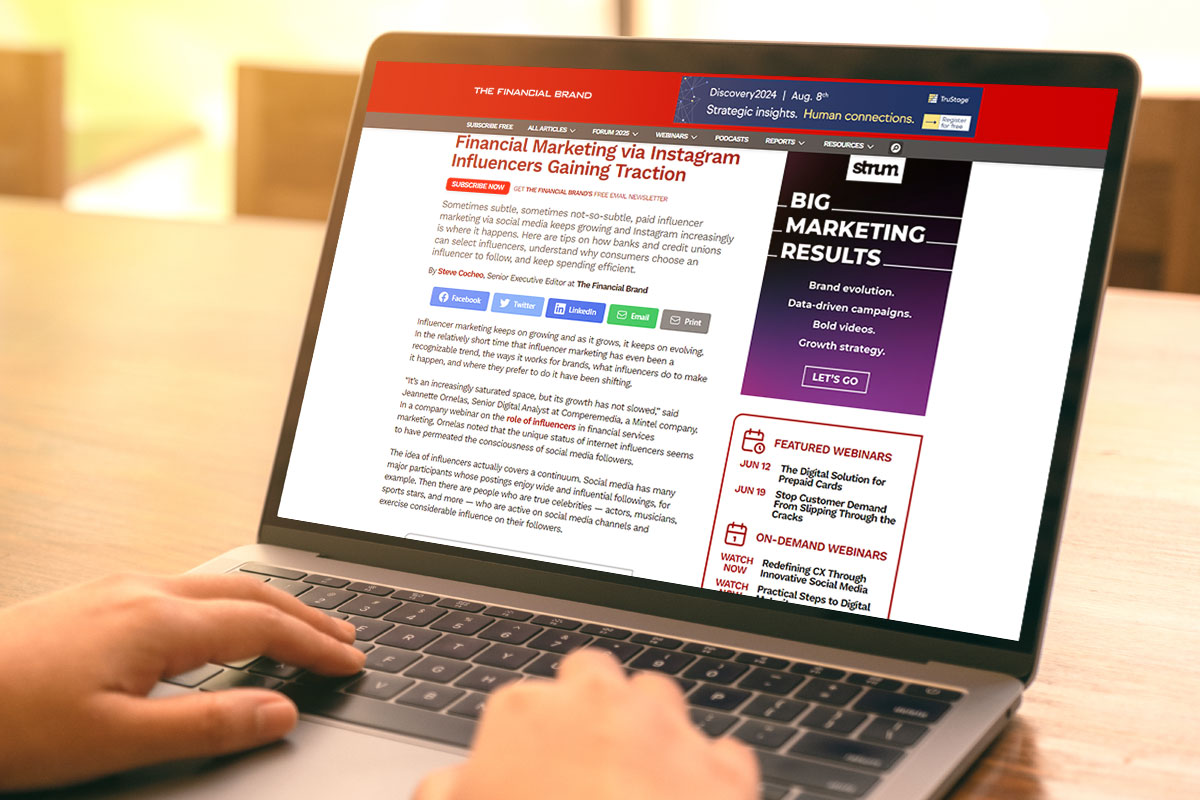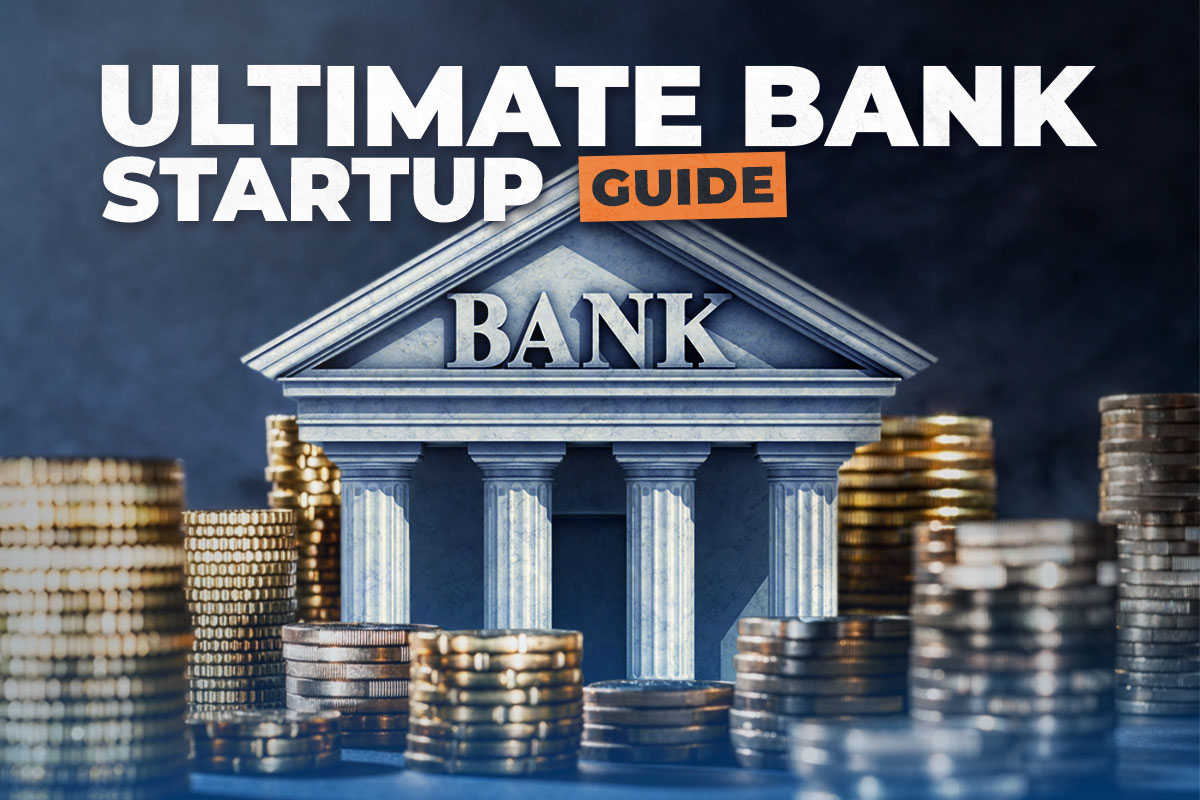It’s no surprise that one of the most profitable businesses around is banking. The United States alone has the world’s largest financial marketplace, and according to a report by SelectUSA, the financial services industry (which includes banks, investment services firms, and insurers) represents 7.4 percent, or $1.5 trillion, of the U.S. gross domestic product. For those who are willing and able to scale the significant barriers to entry, the rewards for opening a bank are great.
Regulations and capital are the two biggest hurdles to jump, and to be clear, starting a bank is not an easy endeavor, particularly for those unfamiliar with the industry. But with a solid, well-devised business plan and strategy, a pile of sweat equity, plentiful stores of patience, and a dash of good fortune, starting your own bank is possible.
Study the guide from start to finish, or click any of the links above to jump to the topic you need to know about right now.
Case Study: Bank of America
Bank of America is a global giant with 66 million customers and operations in 35 countries worldwide. But like most multinational corporations, BoA’s story of success began with a single founder with a vision.
Bank of America actually started life as Bank of Italy (surprisingly enough) when Italian immigrant Amadeo Giannini founded the bank in San Francisco in 1904. Giannini’s objective was to offer banking services to other Italian immigrants and to middle-class Americans who were often denied accounts by the larger financial institutions of that time.
Providing banking for customers who didn’t already have it was the need that Giannini’s new bank met, and he quickly gained customers from all ethnic backgrounds. His clientele mirrored the “melting pot” of early 20th-century America, and so it was appropriate for him to rename his bank Bank of America.
He also had a bold vision that eventually became reality. Through mergers and acquisitions, Giannini’s humble bank became the U.S.’s largest bank and a global financial powerhouse in under a century. If you aspire to build such an impressive bank, start by learning to develop a business mindset.
Your startup bank may never reach BoA’s heights, but its story is proof that a broad, bold vision backed up with excellent customer service and exemplary corporate management can help a new bank transcend humble origins and become a dominant industry player.
You can write your own success story in banking by following these steps.
Step 1: Know the Banking Industry

Most of us are familiar with banking on some level, whether it be through checking and savings accounts, mortgages or loans, credit cards, retirement accounts, or insurance policies. But behind the ATM machine or the drive-thru window are a whole host of complicated transactions that, in aggregate, ensure that the bank not only has money for you to withdraw, but that as a business entity, it is making a profit.
If you haven’t worked in some level of the financial services industry, it’s important to get some industry experience, some specific education in finance, business, or both, and some expert guidance and advice.
How Much Money Do You Need to Start a Bank?
According to MergersCorp, bank startups need between $12 million and $20 million to start operations. Even if you have the money to start your own bank, you should expect it to take a year or more to become licensed and registered.
How Does a Bank Earn Revenue?
Very simply, banks make money by accepting customer deposits and providing financial services to their customers. Some of the financial services that banks offer include:
- Business loans: Loans to promising small business owners, including tech startups, health/wellness businesses, augmented reality technology, mobile apps, and e-learning platform entrepreneurs. Banks earn money based on the annual interest rate.
- Car loans: Many banks and credit unions provide car loans at better rates than dealerships and earn money on the interest.
- Mortgages: Banks make substantial money by lending funds to buy a home or investment property then collecting interest. They may also earn money by packaging loans together and selling them to other investors.
- Investment portfolio management: Experienced bankers may also offer financial investment portfolios for high net-worth individuals. They will normally charge service fees based on the amount of funds they manage for the customer.
- Credit cards: Banks may also offer credit cards to earn interest from the credit card fees. The interest will often be between 15% and 25%, which provides some of the highest returns in the financial services industry.
Banks also typically pay depositors interest on their deposits, ranging from .01% for most bank accounts to 5.15% for a certificate of deposit (CD).
The difference between the higher rates of interest charged to borrowers and the lower rates of interest paid to depositors is known as the interest spread, and this is the major component of bank profits.
Governments often incentivize loans to certain groups, like loans to women-owned businesses.
Is Owning a Bank Profitable?
Yes. Bank startup entrepreneurs will find a bank’s operations to be a very profitable business. According to NYU Stern, banks have nearly 100% gross profits and 30.89% net margins.
That makes a proposed bank nearly three times more profitable than the average business. But a bank’s operations are highly regulated. Read on to get an understanding of the agencies that you’ll have to work with as you learn how to start a bank.
How Much Does a Bank Owner Make?
According to CareerTrend, a president/owner of a small bank of less than 200 employees earns between $96,000 and $194,000 per year. This compensation is normally a combination of a base salary, profit-sharing, sales commissions, and bonuses.
Federal Reserve: Fractional Reserve Banking
The overwhelming majority of banks in the U.S. operate as fractional reserve banks. This means that at any given time, 10% of the bank’s deposits must be available for withdrawal.
This 10% of the deposit revenues is known as the fractional reserve. For instance, for every $100 that a customer deposits, the bank may use $90 to lend out to other customers (including you, for that matter).
Low fractional reserves allow the circulation of money throughout the economy as measured by a factor called the economic multiplier. Fractional reserves increase the monetary supply for borrowers and are seen as instruments to maintain prosperity and a healthy national economy.
In fact, to maintain a healthy economy in response to the coronavirus pandemic, the Federal Reserve took the unprecedented step to reduce the fractional reserve requirement to zero on March 26, 2020.
The concept of fractional reserve means that banks are counting on depositors holding the majority of their funds in their accounts and not withdrawing them all at once.
Most of the time, that is what happens. But when depositors start to withdraw from their accounts in response to a financial crisis or panic, this is known as a bank run, and it can cause the bank to become insolvent and go out of business.
Federal Deposit Insurance Corporation (FDIC)

The Banking Act of 1933 created the Federal Deposit Insurance Corporation (FDIC), which is the regulator for the U.S. banking industry, and it guarantees consumers’ checking and savings accounts up to $250,000 in the event of bank insolvency.
The FDIC is also the regulatory agency for all banks in the United States, and their website provides information and the necessary forms that de novo, or newly established, banks must submit.
Once your bank’s application is in place, expect to wait anywhere from one year to 18 months for approval.
Banks spread out their risk of bank runs by accumulating large numbers of depositors. Low or non-existent fractional reserve requirements have fueled the growth of large national or multinational banks.
Since 2000, there have been 569 bank closures with assets of $1.276 trillion according to the FDIC, which insured nearly 70% of the losses.
Most of these were during the Great Recession caused by the subprime mortgage crisis in 2008, but an average of four banks close each year due to lack of capital adequacy, buyouts, and other causes.
There are other types of business insurance you’ll need. Compare quotes from major insurance companies with Simply Business.
Online Banks
Online banks are typically newly established banks that use emerging technologies to provide a bank account that offers unique features like higher interest payments, buckets for finances, or artificial intelligence technology to help manage finances better.
De Novo Banks
During the first five years of a bank’s operations, you may also hear it referred to as de novo banks, from the Latin word for “new.”
In addition to being up against the economy of scale advantages that large banks enjoy, there are a couple of significant barriers to entry that new bank entrepreneurs must scale. These are 1) regulation, and 2) capitalization (more on this below).
Regulation
Banking is the most regulated business in the United States. According to Independent Banker, an average of 172 de novo banks opened each year before the 2008 financial crisis.
Since that watershed year, the number dwindled to almost nothing. A significant reason for this downturn is the increased regulations that banks must comply with to even open for business.
Can I Start a Bank With No Money?
Bank founders will have to get a substantial amount of money to set up risk management infrastructure, obtain approval, get their banking license, and comply with banking regulations. This business idea requires a large source of capital from either your own personal wealth, venture capitalists, or other business owners.
If you don’t know where you would get $20 million dollars, consider another business idea.
Get Business Ideas in the UpFlip Academy
We’ve interviewed hundreds of business owners and compiled more than 500 business ideas. We’ve turned them into a database that you can sort by startup costs, average revenue profit margins, time to start the business, and market size.
Step 2: Write a Business Plan

Banking business plans require careful planning to comply with the complex process of working with appropriate authorities that oversee the management of the banking system.
Your business plan is your venture’s founding document and will be the reference point for all business decisions moving forward. For this reason, it’s important to spend time writing the business plan.
Luckily, there are numerous business planning resources including:
- Small Business Association (SBA): Learn about business plans directly from the government agency that was created to help businesses succeed.
- Bank of America: Read the BoA guide to writing a business plan.
- Chron: Review a step-by-step guide to writing a business plan for a bank.
- BMA Banking Systems: Read the comprehensive guide to writing a plan for a de novo bank.
When you apply for FDIC approval and insurance, they will examine your business plan closely to make sure you will meet regulations and follow banking industry best practices.
We’ll discuss the elements of a good banking business plan in the next sections.
Explain How Your Own Bank Will Make Money
We’ve discussed the primary ways banks make money. You’ll need to explain what services your legal entity will offer and how you’ll comply with the regulatory process.
Plus, you’ll need to ensure regulatory authorities that you’ll manage potential customers’ money in a safe and sound manner.
Identify Your Target Market
Bank startup ideas will have a different target market based on the location, business model, and scope of business.
For instance, if you’re targeting a younger generation of customers, you’ll need to have a big online presence and mobile banking capability.
If you’re targeting older customers, perhaps retirees, mobile banking may be less of a consideration, but convenient branch locations with easy access and plentiful parking become critical.
Another consideration is whether you want to target small business firms by offering business banking, or whether you want to focus more, or solely, on consumer banking.
It can be hard to accurately describe your market, but it’s a critical assessment to make. Market research firms can gather data that either confirm or deny your own intuitions and can help prevent you from making poor decisions early on. For these reasons, it’s worth considering hiring one.
You can find a guide to market research for new businesses from Entrepreneur. And Joe Gardner, CEO of VentureDevs, has a complete guide to market research published by Forbes.
Document the Type of Bank
There are a ton of different types of banks, and you’ll have to decide which one you’re going to create. Some of the options are:
- National Bank: These are similar to the legacy banks like Bank of America and Wells Fargo that have a business location in the majority of states.
- State Chartered Bank: These banks are approved to operate in a single state.
- Online Banks: Companies like Ally and Chime create an online platform to provide banking and financial services. Learn about online banks.
- Credit Unions: These banks are member-owned banks that pay dividends to their account holders.
Most banks are a combination of brick-and-mortar branches with an online banking counterpart, but the extent to which each element is promoted depends on the banking habits of your customer base.
Online-only banks save on infrastructure costs, but when starting your online bank, don’t forget to consider the enhanced cybersecurity costs you’ll incur.
And if you think that by opening a bank as an online-only business you’ll escape the regulatory scrutiny that brick-and-mortar banks endure, think again. The same charter and regulatory code that storefront banks operate under also applies to online banks.
In addition to these laws, you’ll also have to comply with other regulations designed specifically for online banking. These regulations were devised by an organization called the Federal Financial Institutions Examination Council (FFIEC) and are listed in this guide to online banking.
Define Your Business Structure
Your bank startup costs will be underwritten by a team of investors. That means a corporation is the prevailing business structure in the banking industry.
You’ll need to register with your state’s corporation commission or board, but beyond this, you’ll need to consider how the initial board of directors is chosen, what their terms of engagement will be, their compensation (if any), and how often they will meet (your state may mandate a minimum number of yearly meetings).
You should hire a law firm to form your corporation because it’s easier to head off any problems as the business is formed than it is to go back and change your founding documents or business protocols once issues arise.
Most of this process will be done through the Secretary of State Office in the state your bank will be based in. You’ll also have to look at how to open your own bank in each state where you’ll be operating.
Choose Your Bank Business Name

Your bank name can reflect your geographic origins, or it can be more abstract, or even the name of one of its founders. An example of the former is Bank of America, and an example of the latter is Chase.
Choosing your bank name is an important consideration that can affect both the present and future of financial institutions.
For example, naming your bank Bank of North Carolina may attract customers in your home state who want to do business with local financial institutions, but it could hinder your expansion if you want to open branches in, say, Florida. Choose wisely.
Check out our guide to choosing a business name. You might also look at Forbes’ guide, or The Balance. Shopify even has a tool that will generate a business name and claim the domain for you.
Once you’ve determined your bank name, run searches on your state corporation’s website and also do a WHOIS domain name search via a service like ICANN. The latter is critically important for online banking because having your bank name and website different can be devastating for business.
ICANN can also tell you if somebody currently owns the domain name you’re after and what they will charge to sell it to your business.
Address Start-Up and Operations Costs
Your plan should outline the source(s) of your capital and how and when your investors will be paid back. Your operations costs must also be carefully outlined, and the FDIC will look at your plan to ensure that operations costs are realistic and not underestimated. When calculating your answer to the question How much does it cost to start a bank?, include these for main costs.
1. Regulatory/Legal Compliance
Almost all established banks have attorneys on staff to assist with legal and regulatory compliance, and even as a de novo bank, you should enlist the services of a lawyer.
The fines for non-compliance can be severe and far exceed legal fees. Non-compliance can also place the bank’s future in jeopardy.
2. KYC And AML Compliance
KYC (Know Your Customer) and AML (Anti Money Laundering) regulations exist to make sure that banks are doing business with legitimate entities and not criminal organizations.
In essence, AML mandates KYC, which is verified by having account holders submit documentation before opening accounts.
KYC and AML protect banks from criminal liability, but adherence to these regulations isn’t cheap.
says Greg Pinn, Sr. Director of Merlon, which produces automated systems for regulation compliance.
He also explains that
KYC3 has a helpful guide to understanding KYC and AML compliance and their implications for startup banks.
3. Security

A brick-and-mortar bank branch needs a secure vault, security protocols for armored car cash deliveries, electronic security systems for the building, and sometimes armed guards on site.
Given these costly measures, it might seem like online banks have it easier in terms of security costs.
This isn’t necessarily the case, however: A 2023 report conducted by IBM found that a cybersecurity incident costs a bank $5.9 million on average.
The American Bankers Association has some information about cybersecurity risks and some helpful links to resources for cybersecurity for small businesses in general and banks in particular.
4. Staff
No bank can be a sole proprietorship. Even a small bank requires a minimum of 10 employees, and most banks have more than 20 full-time employees working for them. Among the types of employees banks require are:
- Bank managers
- Bank tellers
- Loan salespeople
- Personal bankers
- Investment consultants
- Accountants
- Auditors
Beyond the operations staff you’ll need for day-to-day operations, you’ll need to carefully select a management team of individuals that includes women and minority representation. This management team will be carefully scrutinized by the FDIC during the approval process, and all members should share vast knowledge and experience in the banking and financial services industry.
Hiring competent and experienced staff who share your vision is a critical step to take, and one that requires significant thought, time, and energy.
Chinese business magnate Jack Ma writes,
McKinsey and Company, as well as the American Bankers Association, both offer helpful guidelines for selecting your management team and employees.
Step 3: Raise Capital

After you’ve gained adequate knowledge and experience and a solid plan for your business has been developed and written down, it’s time to start putting the pieces together.
The hardest step is usually coming up with the capital that the FDIC requires.
As is the case for most businesses, adequate capital can keep a bank afloat during crises and hard times, and somewhere between $20 and $40 million dollars of capitalization is normally required just to get out of the gate and start doing business. When it comes down to it, more is better.
Most individual entrepreneurs don’t have access to this kind of capital, so you’re going to need to build a team of investors. You might consider getting the first amount of capital from Borrow Nation.
If you’ve had a career working for another bank, you may know colleagues who have expressed an interest in starting their own bank, so reach out to these people (but also be aware of non-competitive clauses in their current employment contracts. The Federal Trade Commission recently nullified most non-competes, but executives may still be constrained by such clauses).
Read on for more ideas on individuals to pursue as you work to get your bank off the ground.
Community Leaders
If your bank will be serving a particular community, business, or industry, reach out to community leaders and business owners.
If you know these leaders from your previous career working for an established bank, they will be more willing to work with you because they know your personal qualities, integrity, and excellent reputation.
Community leaders in particular may be interested in creating a bank that is headquartered locally and that serves local customers specifically.
Even in the 21st century, this sort of provincialism can attract new account holders and drives customer loyalty.
But if these sources of investors don’t yield the capital that you’ll need for your new bank, you’re going to have to approach venture capitalists.
Venture Capitalists
The banking industry is a relatively low-risk investment for venture capitalists because of its regulatory climate. They’ll want long term profit shares though. Given banking profits are high, you won’t be in poverty while paying back venture capitalists.
For an excellent overview of how venture capitalists work, read this article from the Harvard Business Review. Oracle NetSuite also offers a comprehensive guide to attracting venture capitalists that includes a downloadable e-book.
Step 4: Get a Bank Charter
According to the Federal Reserve, a de novo bank must operate under either a federal or state charter. A charter is a legal document that authorizes the bank to conduct business.
A charter includes the bank’s articles of incorporation and certificate of incorporation, which is usually issued by the state corporation commission.
Charters can be issued at the federal level by the Office of the Comptroller of the Currency (OCC), or by the state (or the District of Columbia, Guam, Puerto Rico, or the Virgin Islands) in which the bank is incorporated, usually through its banking commission.
As with the FDIC application, federal and state charter offices will carefully evaluate the bank’s business plan, executive team, board of directors, and capitalization amount.
Step 5: Apply for FDIC Approval

The Federal Deposit Insurance Corporation (FDIC) evaluates, and, upon approval, insures and sanctions every new bank in the United States. Required elements of the application and necessary forms are available on the FDIC website. These are the necessary elements:
- Mission statement
- Business plan
- Financial projections for a minimum of three years
- Policy descriptions for loans, investments, and insurance
Obtaining both the bank charter and FDIC approval takes some time—a minimum of 12 months and sometimes as long as 24 months. While you are waiting for approval to come through, you can continue to work on opening your bank.
Learn How to Start a Business and Get $$ in the Bank |
|
| The UpFlip Academy is your one-stop destination for premium business programs that show you exactly how to build a profit-making machine. Follow along with real, successful business owners like Brandon Vaughn and Brianna Rooney who are making millions every year. They break down how to start a successful biz and all the factors to take into consideration. With useful workshops and interactive experiences within the community, you can start planning your next venture. | |
| Get started now by signing up today! | |
Step 6: Apply for Other Necessary Permits
Most bank charters are a sanction for the bank to conduct business, but there may be additional permits or local zoning laws to comply with. The Small Business Association’s website offers easy ways to check for required state and local licenses and permits for your business:
- State: You’ll need to visit your state’s website for specific information on which permits you’ll need to start a bank there. Almost all states will require a charter, and even if it is a national charter, you’ll likely have to apply for a license through the state agency that issues bank charters. If you have some flexibility as you decide where to locate your new bank, you can visit the SBA’s Pick your business location page, which gives some helpful tips on how to choose where to locate your business.
- Local: Again, localities vary widely when it comes to the number of regulations that all new businesses, and especially banks, require. The general rule of thumb is that the larger the population and the amount of businesses in your location, the more permits and paperwork are required. If you have a local SBA office, visit them for advice and assistance.
If you are opening a brick-and-mortar bank, you’ll often need to acquire a Certificate of Occupancy. The CO certifies that all local zoning laws and building codes have been followed.
If you are renting a building, the landlord is usually responsible for the CO.
Step 7: Get Customers

With all the regulatory compliance that starting a bank involves, it’s easy to lose sight of the end goal of any business: attracting and retaining new customers.
Getting customers through your new bank’s doors (or to its website) requires differentiating yourself from your competition.
Create Your Brand
One of the best ways to draw in new customers is by crafting a memorable brand image that you can apply across platforms. This will involve putting together an effective branding campaign that clearly communicates your bank’s mission, values, and identity.
Get a Good Logo

Successful branding begins with a bank logo that represents the company effectively and in a simple, easily memorable manner.
If designing isn’t your strength, many firms offer logo design services at reasonable rates. Investing in a good logo is a step toward a bright future for your new bank.
Advertise Your Brand
Successful advertising happens via both traditional and social media.
The correct answer to Which media platforms should you use to advertise? is All of them. But the target audience that you defined in your business plan will dictate which print, digital, and social media platforms you focus your advertising budget on.
Gain a Social Media Presence

Younger consumers will tend to favor social media. Ellen McGovern, chief marketing officer at Massachusetts-based Clinton Savings Bank, explains the need to be on social media to attract and retain younger customers in an article published by American Banker:
One of the most effective networks of promotion for this younger generation of customers is social media influencers.
In the same article, Molly Young, product marketing manager at partnership automation company Impact, explains the marketing power of influencers:
Customer Relationship Management software like Hubspot makes it easy to manage your customer relationships and your marketing.
Don’t Neglect Traditional Forms of Advertising
If the newer generation of bank customers prefers the influencer network, then older consumers choose traditional media like newspapers and TV, and you certainly can’t afford to alienate this important market segment. So a full portfolio of a combination of new and traditional media is in order.
The best way to determine which media will reach your targeted audience is to request a media kit from prominent local media outlets.
The best media kits will offer detailed audience information that will allow you to select those outlets whose audience most closely matches your target consumer base.
Determine Your Competitive Advantage
Branding and advertising can all be for naught if your bank’s competitive advantage is not clearly defined. A competitive advantage is a unique service, perk, or reward that differentiates your business from others.
Banking is a very competitive industry with large players that have thousands of branches across the country and an economy of scale that allows large banks to waive many fees and offer higher interest yields on checking and savings accounts.
If you can’t match the large banks on price, then perhaps your small, community-based bank can offer personalized, custom accounts to meet individual consumers’ needs, or offer free financial literacy classes for their account holders.
Links to Resources About Business Marketing

Several other articles could be written about marketing, advertising, and PR for your new bank, but there are a couple of excellent already-published articles that focus specifically on getting customers.
- Forbes offers 10 ways to get customers to your new small business
- Inc. offers the same, with a focus on increasing your sales
For a good primer on using influencer marketing, check out this article from The Financial Brand.
Once you have customers, the competition in the financial industry means that pleasing and keeping your base of customers is also essential for success.
Jim Marous, co-publisher of The Financial Brand says,
Bottom line, having a customer-centric culture is more than just a good thing—it’s become a matter of survival.
Business and Fintech Influencers to Follow on Social Media:
- Sebastien Meunier (Twitter, LinkedIn)
- Bradley Leimer (Twitter, LinkedIn)
- Brett King (Twitter LinkedIn)
Video Resources
- Khan Academy’s Intro to Banking
- Building a Bank by MIT Bootcamps
- Banking Explained from Money and Credit
- How to Write a Business Plan by the Young Entrepreneurs Forum
- How to Build a Business from Project Better Self
Conclusion
Starting a bank takes a lot of know-how, plenty of industry experience, and loads of patience and determination to get through the charter and FDIC approval processes. Plus, you’ll need a huge amount of capital.
For these reasons, we can’t recommend starting a bank as your first entrepreneurial venture, but more as a capstone if you’ve had a successful career in banking and financial services.
For those who successfully scale the formidable barriers to entry, the financial rewards can be great. But for many community bank owners, the real reward is in providing an essential institution that ensures the financial well-being of their community.
British business titan Sir Richard Branson sums up the essential purpose of any business: “A business is simply an idea to make other people’s lives better,” and your bank could do just that.




